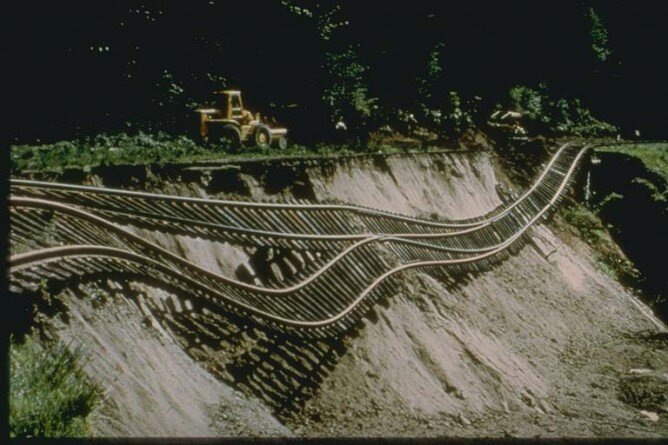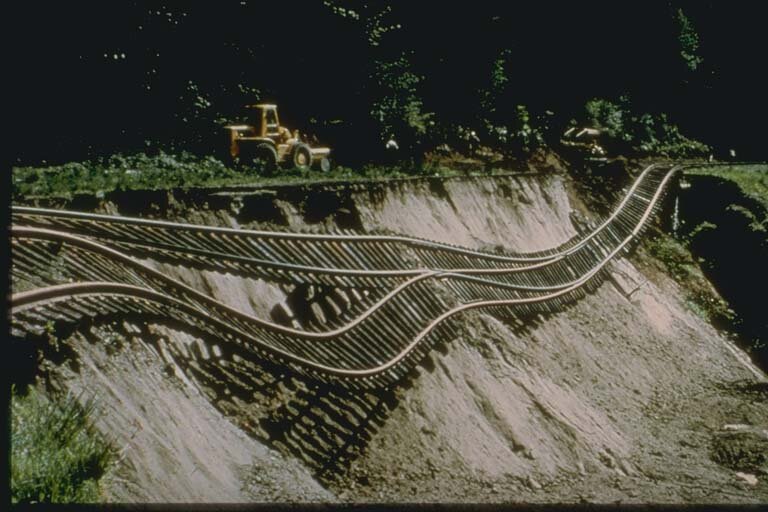
Here is the third and final part of my talk with Carol Dunn, who works for Bellevue’s Office of Emergency Management, about earthquakes and the Puget Sound. Here, Carol discusses why it’s so hard for people to get focused on the long-term seismic threat, and explains what the disastrous earthquakes in 2010 and 2011 have done to get people to pay attention to the threat.
What’s the most formidable natural disaster threat facing the region? In terms of both likelihood and potential damage?
It may surprise you, but to me, the most formidable natural threat to our region is human nature. There is a biological reason we don’t prepare, our minds are wired in a way to make it really hard to think clearly about future risks. Behavioral psychologists have studied it—and now neuroimaging confirms that it takes place.
Recent neuroimaging studies have shown that we make decisions a split second before we are aware we of it, confirming what was suspected, that it is not the noisy part of our brain that we are aware of that is the boss in our brain, it is our subconscious. This isn’t really surprising though, and it makes sense. While we are going through the complicated thoughts and actions that are required to stay healthy and well, our subconscious is constantly scanning for dangers and opportunities. It needs to have the ability to direct our focus, and even make us act without thinking in a crisis, or we wouldn’t survive very long.
The part of our brain that handles this is very similar in how it works to animals and reptiles and it has a limited number of things it can do some of them are: “Engage or Avoid” and “Fight or Flight.” It can have us prioritize thoughts on a topic that it thinks we need to act on. It can make us not think about something. It can make us hyper-aware of the risk of something—even when there isn’t really one (public speaking, for example)–it can make thoughts of risk feel as if they don’t matter.
The reason that this is our biggest natural danger is that the “default” mode of our subconscious is to consider future risk something that we shouldn’t think about. I suspect our minds are like this for two reasons: 1. The risks from disasters can be radically reduced just by deciding to do so—but it is a multi-step process, and 2: our subconscious doesn’t do multiple step activities—it can incline us to variations on “engage,” “avoid,” and “do both.” From the subconscious perception, the best thing to do about future risk is to “avoid” thinking about it, until it happens, then the subconscious acts—by spurring a fear response that actually makes it much harder to think clearly and bounce back quickly. It is really important to learn how to approach risk differently—and it isn’t that hard, once you try.
After human nature, I rank our dangers like this: The most likely situation that will happen to each of us is having a fire in our house—we have mainly wooden houses and they catch fire easily. Last time I checked there was a house fire in King County happening every 10 hours. The main cause for that is unattended cooking—you go and start your lunch, for instance, then get sucked in to Farmville. After that, our severe weather—windstorms that cause trees to fall into houses or power lines which causes a cascade of problems.
The disaster that can have the greatest long term impact on all of us is a large earthquake. They don’t happen very often, but once you know what to look for, you see that everything about our area is defined by its history of massive earthquakes. Our mountains, our Sound—many of our hills even. West Seattle, Somerset in Bellevue—they only have such great views because past earthquakes have lifted the ground up to such great heights. Our area is on one of the most fascinating geological points on the planet—which, of course, is always sort of bad news for the residents. Not entirely though—with earthquakes, we residents have a lot to say. It isn’t the earthquake that causes the harm. If you are in the largest earthquake on the planet and you are in a field, the most likely outcome is you will just fall down. It isn’t the earthquake, it is what, how and where we build and place things.
We have the skillset to make and place buildings and things in ways and places that are unlikely to be harmed by earthquakes, we just need to work through our mental blocks and make it happen. If society as a whole won’t do that, we as individuals can take the time to learn what types of buildings handle earthquakes well (hint: up to current code, low and square—not too many openings like windows or garages spaced too close together). Expect that there will be periods where general supplies of water, food and medicine will be cut off: build your own back up supply.
A lot of the natural dangers to the region are recurring and highly visible: floods, mudslides, windstorms; and with the example of St. Helens, it’s pretty easy to look at the mountains and imagine them erupting. How do you combat the tendency to overlook the seismic danger?
For me, it goes back to biology—we overlook seismic danger for the same reason that zebras overlook the danger of lions. When we are aware of danger our body’s shift focus to being ready for combat, our heart rate increases, our digestion slows down, we are tense because we are ready to burst into action if we need it. If zebras were constantly thinking of lions, they wouldn’t be able to function, so our brains make our awareness of the threat go away. You can see signs of this all the time. We live over an active surface fault. The logical and rational thing to do would be to make it a top priority to be sure that all of our buildings, infrastructure and systems are the optimal choices to be sure we all make it through alright. We don’t though; we feel very comfortable with our mental reasons why we aren’t going to take the opportunity we have been given to identify each of the things we know will be hurting people and fix them so they won’t. We have our reasons. It is too bad that the Earth doesn’t understand or take our reasons into account when it does what it does. The earth moves, physics happens.
The families in the buildings that hold up well in shaking will do better than the families in buildings that don’t hold up well in shaking. The people with resources and good information will have an easier time than those without resources or access to information. It is already possible to see which groups will be doing better and which will be doing worse. It’s our decision to say that only new or massively renovated buildings need to be brought to code. The residents in the new renovated buildings will be doing much much better than the residents in the older buildings. Though, we do have a head start. Low, wood square buildings often handle earthquakes quite well: That describes a lot of our residential building stock. If we can get as many of them as we can bolted to their foundations, with their water heaters braced, we’ll be doing pretty well.
Have the big earthquakes of the past 15 months brought in a lot of people calling and emailing to inquire about the local seismic risk? Do people recognize that the urban earthquakes in New Zealand and Haiti could happen here, on the Seattle Fault, or are they not connecting earthquakes in the news to a threat around Puget Sound?
There wasn’t a large surge in calls after Haiti, Chile or New Zealand, which surprised me—but there has been a huge surge in presentation requests after the triple tragedies in Japan. It is interesting because I spend a lot of time reaching out to non-profits asking if we can work together to build the resilience of their clients, I have had to get used to not being called back very often. Now it is a lot easier.
This is Part 3 of a three-part series. See also Part 1 and Part 2.
